 Like so many other boys and girls, when I was a child I thought that I would know my worth and value when I got older. Back then, I had very little self worth and it was a daily struggle functioning in the world feeling that I needed to change myself in order to fit in. Through time, as we go through adulthood, driven by the desperation of loneliness, we find ways to hide seemingly unflattering things about ourselves or subject ourselves to dysfunctional relationships because we feel that we are not special enough to be accepted by the world. Many of us feel like we are forced to live a false life where we repress the best parts of ourselves so that we can be accepted.
Like so many other boys and girls, when I was a child I thought that I would know my worth and value when I got older. Back then, I had very little self worth and it was a daily struggle functioning in the world feeling that I needed to change myself in order to fit in. Through time, as we go through adulthood, driven by the desperation of loneliness, we find ways to hide seemingly unflattering things about ourselves or subject ourselves to dysfunctional relationships because we feel that we are not special enough to be accepted by the world. Many of us feel like we are forced to live a false life where we repress the best parts of ourselves so that we can be accepted.
Bulgarian Wines
These thoughts kept running through my head after a wine seminar discussing the wines of Bulgaria. I knew very little about Bulgarian wines except that their Cabernet Sauvignon and Merlot wines were supposed to be an incredible value for good quality. Back in my wine education days – around a decade ago – I sought out Bulgarian wines in New York City, which, believe it or not, were difficult to find in the city that has everything… and I have to say that the Cabernet Sauvignon over delivered for the price.
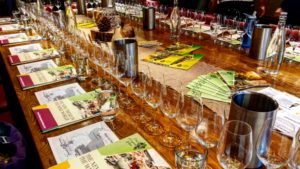 So it was interesting to find myself here, many years later, getting to know Bulgaria in a deeper, more detailed way in a master class, and my God, is there a lot to know about Bulgarian wine: the various types of climate, soil, grape varieties (local and international) and the up and down roller coaster they have been a part of since their wine revolution in 1878 – although vine growing and winemaking can be traced back 5000 years in that area. After tasting 25 wines that day, I not only realized the thrilling potential of Bulgarian wines but also how some of their wine regions specialized in aromatic white wines.
So it was interesting to find myself here, many years later, getting to know Bulgaria in a deeper, more detailed way in a master class, and my God, is there a lot to know about Bulgarian wine: the various types of climate, soil, grape varieties (local and international) and the up and down roller coaster they have been a part of since their wine revolution in 1878 – although vine growing and winemaking can be traced back 5000 years in that area. After tasting 25 wines that day, I not only realized the thrilling potential of Bulgarian wines but also how some of their wine regions specialized in aromatic white wines.
Complexity of Bulgaria
I think I can faintly remember a wine teacher once telling me that there was no point in drinking a Bulgarian wine unless it was Cabernet Sauvignon – not to be critical of someone else, because trust me I have made more mistakes than I would care to admit, but it was a statement that shaped my view of this country for many years. There was no other information about Bulgaria, that I knew of at the time, that could have given me a better idea of the reality of their wines, and so I thought they could only make good Cabernet Sauvignon and Merlot, as only the large wineries could be found in the US. It was interesting to learn that part of the Cabernet Sauvignon and Merlot push in export markets had to do with international acclaim being bestowed on a couple of Bulgarian wines made from those varieties that were heralded as “Good Wines At Giveaway Prices” in the Washington Post and that won a New York Wine competition in the early 1980s. Bulgarian wines’ initially slow acceptance into the US market was then brought to a screeching halt, and so, many wine professionals are now stuck in the early 1980s when thinking about Bulgaria.
 Despite Bulgaria’s upward trajectory with its winemaking and vineyard practices starting in the early 1900s (after recovery from the devastation of phylloxera) that peaked in the 1980s, in 1985 Mikhail Gorbachev carried out an anti-alcohol campaign with partial prohibition, known as the “dry law” until the fall of communism in 1990. After that, Bulgaria needed to spend the next couple of decades stabilizing their economy while their wine industry took on the long and arduous process of trying to find the rightful owners of vineyards that were abandoned once communism took effect in the 1940s. But in the meantime, its wine industry suffered with sub-par quality of under ripe, green wines. In 2005, things started to look up when Bulgaria was able to qualify for two protected geographic indications from the EU (joining the EU in 2007) that pertained to their wine region; since that time they have kicked it up into high gear with improvements to their vineyards and winemaking.
Despite Bulgaria’s upward trajectory with its winemaking and vineyard practices starting in the early 1900s (after recovery from the devastation of phylloxera) that peaked in the 1980s, in 1985 Mikhail Gorbachev carried out an anti-alcohol campaign with partial prohibition, known as the “dry law” until the fall of communism in 1990. After that, Bulgaria needed to spend the next couple of decades stabilizing their economy while their wine industry took on the long and arduous process of trying to find the rightful owners of vineyards that were abandoned once communism took effect in the 1940s. But in the meantime, its wine industry suffered with sub-par quality of under ripe, green wines. In 2005, things started to look up when Bulgaria was able to qualify for two protected geographic indications from the EU (joining the EU in 2007) that pertained to their wine region; since that time they have kicked it up into high gear with improvements to their vineyards and winemaking.
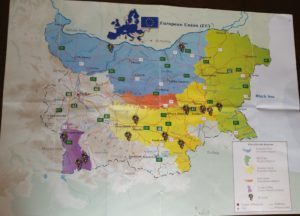 Since that time they’ve realized that they can’t be 100% reliant on the EU because they are added competition in a sense, and Bulgaria has assumed the mantle to further designate smaller quality areas amongst themselves; some agree on 5, 9, 11 or even more but everyone in the Bulgarian wine industry agrees that 2 general regions is not only insulting but is also misrepresentative as it is lumping the mass produced wines together with boutique, specialized producers from a specific area.
Since that time they’ve realized that they can’t be 100% reliant on the EU because they are added competition in a sense, and Bulgaria has assumed the mantle to further designate smaller quality areas amongst themselves; some agree on 5, 9, 11 or even more but everyone in the Bulgarian wine industry agrees that 2 general regions is not only insulting but is also misrepresentative as it is lumping the mass produced wines together with boutique, specialized producers from a specific area.
Muscat & Other Aromatic White Varieties
 During the master class I tasted five aromatic white wines, and at home, one from samples that were sent to me (wine tasting notes below). There was such a range of aromatics, flavors and overall qualities; a true experience of balanced, complex and simply enchanting whites. Bulgaria has so many unidentified aromatic white grapes that Bulgarian wine producers call many of them Muscat, even though they are probably a completely different biotype that is local to that area. But for now, they have been able to distinguish a few of these varieties that are rare to Bulgaria; Dimyat is a very old Balkan variety possibly originating in Bulgaria, and Misket originates from Bulgaria (with three biotypes – one having pink skin with the other two white varieties being a hybrid); as well as other exotically fun ones such as the Tamianka variety that is a mystery grape perhaps from the Middle East and Traminer thought to have been born in France and goes under many names, one of which being Savagnin –meaning “wild”.
During the master class I tasted five aromatic white wines, and at home, one from samples that were sent to me (wine tasting notes below). There was such a range of aromatics, flavors and overall qualities; a true experience of balanced, complex and simply enchanting whites. Bulgaria has so many unidentified aromatic white grapes that Bulgarian wine producers call many of them Muscat, even though they are probably a completely different biotype that is local to that area. But for now, they have been able to distinguish a few of these varieties that are rare to Bulgaria; Dimyat is a very old Balkan variety possibly originating in Bulgaria, and Misket originates from Bulgaria (with three biotypes – one having pink skin with the other two white varieties being a hybrid); as well as other exotically fun ones such as the Tamianka variety that is a mystery grape perhaps from the Middle East and Traminer thought to have been born in France and goes under many names, one of which being Savagnin –meaning “wild”.
Also, the flight of Pinot Noir wines, that expressed a sense of place from the different quality areas, as well as the flight of indigenous and hybrid reds really showed a colorful tapestry of wines that exists in this one country.
The World Won’t Work Around You
 Of course there is still push back from US importers that want to keep with what the people know of Bulgaria, and so, they mainly value Merlot and Cabernet Sauvignon. Many of the tiny wine producers, which I was lucky to be able to taste, don’t even harvest their whole vineyard, some leaving as much as 50% of their crop because they feel they will only be able to sell the half to their local market for a fair price and that no one else outside of Bulgaria would be interested in their smaller, artisanal wines. It is estimated that out of the 150,000 acres (60,000 hectares) of vineyards in Bulgaria that only 100,000 acres (40,000 hectares) were harvested with the rest left behind in the 2015 vintage.
Of course there is still push back from US importers that want to keep with what the people know of Bulgaria, and so, they mainly value Merlot and Cabernet Sauvignon. Many of the tiny wine producers, which I was lucky to be able to taste, don’t even harvest their whole vineyard, some leaving as much as 50% of their crop because they feel they will only be able to sell the half to their local market for a fair price and that no one else outside of Bulgaria would be interested in their smaller, artisanal wines. It is estimated that out of the 150,000 acres (60,000 hectares) of vineyards in Bulgaria that only 100,000 acres (40,000 hectares) were harvested with the rest left behind in the 2015 vintage.
I believe that all of us should know the hardcore reality that the world won’t work around you, especially when it comes to paying bills, one has to work around the world… but not at the expense of losing that special treasure that may be unconventional, yet could be a game changer… such as opening our mind to the true potential of dry aromatic white wines.
Much More Than the World Thought You Were
Many of these small Bulgarian wine producers have other jobs in order to support themselves and these wines are passion projects for many of them; I truly feel like they are at a crossroads of how much longer they can continue. All of us have been there, where we were pursuing something on the side and we gave up because we thought there was no point because we didn’t really think we offered any value to the world.
That day of the Bulgarian master class, I knew I was witnessing a revelation of something very special as these small producers were showing me what their land and culture was capable of, and they would not allow the outside world to dictate their worth. Yes, Bulgaria will always have to have big wine companies that will help to support their industry, and the smaller producers will probably have to balance the reality of their lives with other jobs, but these struggling producers who are keeping their heads barely above water, trying to keep their true value as a winemaking country alive just need a little recognition, like all of us, to know that it is worth the struggle and the fight.
Bulgarian wines are so much more than the quick throwaway blurb in a wine book or the snarky comment. I hope they know that, I hope they continue to fight, and most importantly, I hope we listen.
****************************************************************
Tasting of Samples on March 15th, 2018
Bulgarian wine samples were sent to me on another occasion and so I thought it was an ideal post to talk about these wines as well. The master class wines are below these tasting notes.
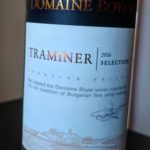 –2016 Domaine Boyar, Traminer, “Selection”, Thracian Valley: Traminer is a variety that has many biotypes that vary in aromatic intensity but this wine has a lovely moderately perfumed nose of lychee and spice with juicy stone fruit flavors that had a fun peach skin hint and a delicately floral finish.
–2016 Domaine Boyar, Traminer, “Selection”, Thracian Valley: Traminer is a variety that has many biotypes that vary in aromatic intensity but this wine has a lovely moderately perfumed nose of lychee and spice with juicy stone fruit flavors that had a fun peach skin hint and a delicately floral finish.
–2016 Vini, Chardonnay, Thracian Valley: A light and vibrant Chardonnay with apricot and zesty lemon that had a blanched almond finish.
 –2015 Vini, Pinot Noir, Danube River Plains: An aromatic Pinot Noir with cherry blossoms and star anise with vivid fruit along the light bodied palate.
–2015 Vini, Pinot Noir, Danube River Plains: An aromatic Pinot Noir with cherry blossoms and star anise with vivid fruit along the light bodied palate.
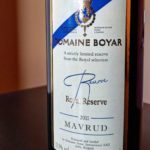 –2011 Domaine Boyar, Mavrud, “Reserve”, Thracian Valley: Layers of complex aromas of forest floor, leather and cinnamon with black cherry flavors on a medium, round body that had a mint-y lift.
–2011 Domaine Boyar, Mavrud, “Reserve”, Thracian Valley: Layers of complex aromas of forest floor, leather and cinnamon with black cherry flavors on a medium, round body that had a mint-y lift.
–2016 Vini, Merlot, Thracian Valley: A Merlot that has a good combination of New World fruit generosity and Old World rustic charm with delicious plums and blueberries laced with graphite and cocoa nibs that were carried by dusty tannins.
 –2015 Domaine Boyar, Cabernet Sauvignon, “Reserve”, Thracian Valley: An easygoing Cabernet Sauvignon that has gentle tannins, fresh black berry fruit and a pencil lead finish.
–2015 Domaine Boyar, Cabernet Sauvignon, “Reserve”, Thracian Valley: An easygoing Cabernet Sauvignon that has gentle tannins, fresh black berry fruit and a pencil lead finish.
Bulgaria Wine Master Class on February 27th, 2018
Many of the below wines are not on the US market yet but I hope they are able to find a place in our market soon.
As discussed above, there are only two EU wine protected geographic indications for Bulgaria, Danubian Plain PGI and Thracian Valley PGI, but within the parentheses written below, the location of the vineyards is more highly specialized.
Also, it is interesting to note that although we would think of moderately priced white wines as being released onto the market as quickly as possible, the small, quality-minded Bulgarian producers will sometimes hold them back because they feel their wines will need a few years to show their potential. Again, many of these wines are undervalued so you can’t gauge their aging potential by price alone.
Short Recent Vintage Overview
2017: Best vintage in recent years with balanced wines
2016: Ripe vintage where the wines are evolving quickly
2015: Okay vintage evolving more slowly than ‘16 yet some areas made very nice wines
First Flight – White Wines made with International Grape Varieties
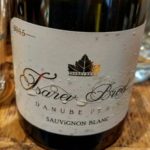 -2015 Tsarev Brod, Sauvignon Blanc, Danubian Plain PGI (North Black Sea Coast): The North Black Sea is one of the coolest wine regions in Bulgaria, located in the North-East. This Sauvignon Blanc has a pretty nose with flinty minerality, lemon confit and mango notes (zingy and tropical) with a richness on the body that balances the crisp acidity
-2015 Tsarev Brod, Sauvignon Blanc, Danubian Plain PGI (North Black Sea Coast): The North Black Sea is one of the coolest wine regions in Bulgaria, located in the North-East. This Sauvignon Blanc has a pretty nose with flinty minerality, lemon confit and mango notes (zingy and tropical) with a richness on the body that balances the crisp acidity
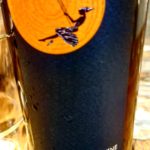 -2017 Villa Melnik, Sauvignon Blanc (Orange Wine), Thracian Valley PGI (Struma River Valley): An exciting Sauvignon Blanc as an orange wine in one of the warmest wine regions in Struma Valley, in the South-West (although there are more moderate micro-climate vineyards where some producers will make white wines).This orange wine had around 20 days of skin contact and had fun aromas of ginger, bruised apple, roasted nuts and dried pineapple flavors that had some grip. They have no problems selling out of this wine in Bulgaria since the young people love it.
-2017 Villa Melnik, Sauvignon Blanc (Orange Wine), Thracian Valley PGI (Struma River Valley): An exciting Sauvignon Blanc as an orange wine in one of the warmest wine regions in Struma Valley, in the South-West (although there are more moderate micro-climate vineyards where some producers will make white wines).This orange wine had around 20 days of skin contact and had fun aromas of ginger, bruised apple, roasted nuts and dried pineapple flavors that had some grip. They have no problems selling out of this wine in Bulgaria since the young people love it.
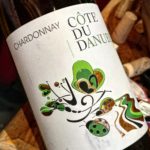 -2016 Burgozone Winery, Chardonnay, “Cote du Danube”, Danubian Plain PGI (North West): An elegantly nimble Chardonnay that had white flowers, wet stones and exotic kaffir lime with a long, expressive finish.
-2016 Burgozone Winery, Chardonnay, “Cote du Danube”, Danubian Plain PGI (North West): An elegantly nimble Chardonnay that had white flowers, wet stones and exotic kaffir lime with a long, expressive finish.
-2016 Tsarev Brod, Sepage, Danubian Plain (North Black Sea Coast): This is a white wine blend that is Sauvignon Blanc dominant with Chardonnay, Traminer and Riesling making up the rest of the blend. Although the North Black Sea is one of the coolest regions, these vineyards come from a warmer micro-climate that is known for its limestone soils – so much limestone that they had to change the regulations for the drinking water that passed through these soils. The rich body (45 days on the lees) balances the multiple layers of dried flowers, honey covered golden apples and lime blossom.
 -2015 Villa Yustina, “4 Seasons”, Gewürztraminer, Thracian Valley PGI (West): This wine had such a lovely purity of Gewürztraminer varietal characteristics of pristine lychee flavors that reminded me of the quality Gewürztraminer that is coming out of Chile. Its purity was just a pleasure and the retained fresh acidity just added to the delightful experience. Only 7000 bottles (yes, bottles!) made.
-2015 Villa Yustina, “4 Seasons”, Gewürztraminer, Thracian Valley PGI (West): This wine had such a lovely purity of Gewürztraminer varietal characteristics of pristine lychee flavors that reminded me of the quality Gewürztraminer that is coming out of Chile. Its purity was just a pleasure and the retained fresh acidity just added to the delightful experience. Only 7000 bottles (yes, bottles!) made.
Second Flight – Aromatic Whites (considered local specialties)
-2016 Karabunar Winery, Dimyat, “Bulgarian Heritage”, Thracian Valley PGI (West): Made from the Dimyat variety originating in Bulgaria. This wine had a lanolin nose with saline minerality and marked acidity.
 -2015 Karabunar Winery, Misket, “Bulgarian Heritage”, Thracian Valley PGI (West): Misket is considered the best local white variety in Bulgaria. I really liked the richness of honey flavors combined with the fresh citrus and floral ones.
-2015 Karabunar Winery, Misket, “Bulgarian Heritage”, Thracian Valley PGI (West): Misket is considered the best local white variety in Bulgaria. I really liked the richness of honey flavors combined with the fresh citrus and floral ones.
 -2015 Via Verde, Misket & Muscat, “Expressions”, Thracian Valley PGI (Struma River Valley): I walked away really loving these “Expressions” wines from Via Verde, made by a young winemaking couple and has beautiful dragonflies on their labels that vary in their colors to express the qualities of the wine inside. This Misket and Muscat blend had intoxicating aromas of wildflowers with hints of licorice, despite them coming from vineyards in the warmer region of Struma, they have a lovely vitality of acidity due to the vineyards being high in altitude. Only 4000 bottles (yes, I said bottles again) are made.
-2015 Via Verde, Misket & Muscat, “Expressions”, Thracian Valley PGI (Struma River Valley): I walked away really loving these “Expressions” wines from Via Verde, made by a young winemaking couple and has beautiful dragonflies on their labels that vary in their colors to express the qualities of the wine inside. This Misket and Muscat blend had intoxicating aromas of wildflowers with hints of licorice, despite them coming from vineyards in the warmer region of Struma, they have a lovely vitality of acidity due to the vineyards being high in altitude. Only 4000 bottles (yes, I said bottles again) are made.
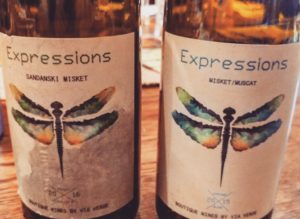 -2016 Via Verda, Sandanski Misket, “Expressions”, Thracian Valley PGI (Struma River Valley): This Misket had zesty pink grapefruit flavors with a real tangy edge that was electric on the linear body with bright yellow flowers finish. Whimsical wine! Only 4000 bottles made.
-2016 Via Verda, Sandanski Misket, “Expressions”, Thracian Valley PGI (Struma River Valley): This Misket had zesty pink grapefruit flavors with a real tangy edge that was electric on the linear body with bright yellow flowers finish. Whimsical wine! Only 4000 bottles made.
-2015 Bratanov Winery, Tamianka, Thracian Valley PGI (Sakar): Tamianka is known as a mystery white grape that is possibly from the Middle East, yet it has found its home in Bulgaria. Exotic spice with rich orange marmalade and a lush finish that has an intense stoney minerality. Fascinating wine.
Third Flight – Pinot Noir
-2016 Vini, Pinot Noir, Danube River Plains: Pretty, floral, light Pinot Noir that had vivid cranberry with a spicy lift.
 -2016 Tsarev Brod, Pinot Noir, Danubian Plain PGI (North Black Sea Coast): A Pinot Noir from the cooler North Black Sea region with lilacs, raspberry, sour cherry and chalky minerality.
-2016 Tsarev Brod, Pinot Noir, Danubian Plain PGI (North Black Sea Coast): A Pinot Noir from the cooler North Black Sea region with lilacs, raspberry, sour cherry and chalky minerality.
 -2014 Burgozone Winery, Pinot Noir, “Cote du Danube”, Danubian Plain PGI (North – West): It was nice to compare this Pinot Noir with the previous one as this comes from a warmer area. Smoky with hints of mushrooms and black cherries; it was rich and complex on the body.
-2014 Burgozone Winery, Pinot Noir, “Cote du Danube”, Danubian Plain PGI (North – West): It was nice to compare this Pinot Noir with the previous one as this comes from a warmer area. Smoky with hints of mushrooms and black cherries; it was rich and complex on the body.
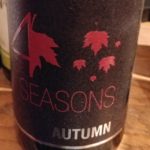 -2015 Villa Yustina, Pinot Noir, “4 Seasons”, Thracian Valley PGI (West): Coming from vineyards 1640 feet (500 meters) above sea level. High-toned nose with candied cherry, pine and Thai basil.
-2015 Villa Yustina, Pinot Noir, “4 Seasons”, Thracian Valley PGI (West): Coming from vineyards 1640 feet (500 meters) above sea level. High-toned nose with candied cherry, pine and Thai basil.
 -2014 Villa Melnik, Melnik & Pinot Noir, “Bergulé”, Thracian Valley PGI (Struma River Valley): A red blend of 75% Melnik (a thin skinned red variety) and 25% Pinot Noir. Melnik’s full name is Shiroka Melnishka Loza and it is believed to be a local variety that was originally brought to Bulgaria by the soldiers of Alexander the Great; it is exclusively grown in Sandanski, Melnik and Petrich in the Struma Valley. More black fruit and structure on this wine with lots of energetic acidity that was highlighted by black pepper.
-2014 Villa Melnik, Melnik & Pinot Noir, “Bergulé”, Thracian Valley PGI (Struma River Valley): A red blend of 75% Melnik (a thin skinned red variety) and 25% Pinot Noir. Melnik’s full name is Shiroka Melnishka Loza and it is believed to be a local variety that was originally brought to Bulgaria by the soldiers of Alexander the Great; it is exclusively grown in Sandanski, Melnik and Petrich in the Struma Valley. More black fruit and structure on this wine with lots of energetic acidity that was highlighted by black pepper.
Fourth Flight – Local Red Varieties
-2015 Villa Melnik, Shiroka Melnik, “Aplauze”, Thracian Valley PGI (Struma River Valley): This is the Shiroka Melnishka Loza variety mentioned in the previous note. Plush cassis fruit with mixture of plums and brambly berries. Only 2000 bottles, yes bottles (that joke never gets old), made of this wine.
 -2015 Rupel Winery, Melnik 55, “Gramatik”, Thracian Valley PGI (Struma River Valley): Melnik 55 is a crossing: Shiroka Melnishka Loza (aka Melnik) & Valdiguié (red grape variety from Languedoc-Roussillon in France). In 1977 it was approved and recognized as an original variety. Cocoa powder, dried herbs, eucalyptus and toasted coconut flakes (80% American and 20% French oak was used) with a blackberry finish.
-2015 Rupel Winery, Melnik 55, “Gramatik”, Thracian Valley PGI (Struma River Valley): Melnik 55 is a crossing: Shiroka Melnishka Loza (aka Melnik) & Valdiguié (red grape variety from Languedoc-Roussillon in France). In 1977 it was approved and recognized as an original variety. Cocoa powder, dried herbs, eucalyptus and toasted coconut flakes (80% American and 20% French oak was used) with a blackberry finish.
 -2013 Orbelus, Melnik, Thracian Valley PGI (Struma River Valley): Made from organic grapes and the first winery in Bulgaria to use natural winemaking practices. A red blend of Melnik (dominant variety) with Grenache and Petit Verdot making up the rest of the blend – although it was said that they no longer want to use the Grenache in this blend. A real decadent wine that was completely hedonistic with espresso and blueberry preserves with chewy tannins. I would love to have this wine with a cheese plate. Only 8,000 bottles made.
-2013 Orbelus, Melnik, Thracian Valley PGI (Struma River Valley): Made from organic grapes and the first winery in Bulgaria to use natural winemaking practices. A red blend of Melnik (dominant variety) with Grenache and Petit Verdot making up the rest of the blend – although it was said that they no longer want to use the Grenache in this blend. A real decadent wine that was completely hedonistic with espresso and blueberry preserves with chewy tannins. I would love to have this wine with a cheese plate. Only 8,000 bottles made.
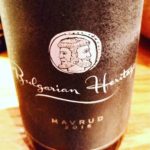 -2015 Karabunar Winery, Mavrud, “Bulgarian Heritage”, Thracian Valley PGI (West): Mavrud is one of the oldest Bulgarian indigenous varieties, dating back to ancient times. Expands in the mouth with a broad body with controlled tannins and lots of vigor amongst the generous black fruit with a hint of spice.
-2015 Karabunar Winery, Mavrud, “Bulgarian Heritage”, Thracian Valley PGI (West): Mavrud is one of the oldest Bulgarian indigenous varieties, dating back to ancient times. Expands in the mouth with a broad body with controlled tannins and lots of vigor amongst the generous black fruit with a hint of spice.
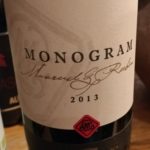 -2013 Villa Yustina, Mavrud & Rubin, “Monogram”, Thracian Valley PGI (West): A blend of Mavrud and Rubin – Rubin is a crossing between Nebbiolo and Syrah created in 1944 and recognized as an original variety in 1961. Many great winemakers have come out of the Villa Yustina which was noted with this wine. Seductive truffle note with smoldering cedar and violets and fine tannins. A Bulgarian wine with an international touch.
-2013 Villa Yustina, Mavrud & Rubin, “Monogram”, Thracian Valley PGI (West): A blend of Mavrud and Rubin – Rubin is a crossing between Nebbiolo and Syrah created in 1944 and recognized as an original variety in 1961. Many great winemakers have come out of the Villa Yustina which was noted with this wine. Seductive truffle note with smoldering cedar and violets and fine tannins. A Bulgarian wine with an international touch.
Fifth Flight – International Reds and Blends
-2015 Orbelus, Hrumki Blend, Thracian Valley PGI (Struma River Valley): A red blend of 41% Merlot, 25% Melnik, 16% Syrah, 9% Grenache and 9% Marselan made from organic grapes and the first winery in Bulgaria to use natural winemaking practices. Beautiful bouquet of flowers and fresh blueberries with a hint of crumbly rock and well-knit tannins. A knock out! Only 7,400 bottles made.
-2015 Rupel Winery, Merlot, “Gramatik”, Thracian Valley PGI (Struma River Valley): This Merlot has plush-ness and fine structure with blueberry liqueur and gravelly undertones.
-2015 Rupel Winery, Cabernet Sauvignon, “Gramatik”, Thracian Valley PGI (Struma River Valley): Earth driven with hints of mint and spice box with bright black cherries with harmonious tannins.
-2013 Villa Melnik, Cuvée, “Bergulé” Thracian Valley PGI (Struma River Valley): A red blend of 50% Cabernet Sauvignon, 35% Syrah and 15% Merlot. The tannins were still evident giving lots of structure with jammy fruit and black pepper. This wine would work well with lamb or any game dish.
-2015 Rupel Winery, Marselan, “Gramatik” Thracian Valley PGI (Struma River Valley): Marselan is a cross between Cabernet Sauvignon and Grenache that has become an important red variety in Israel. I tasted many Marselan wines when I was in Israel and there was a great disparity in quality, but with yield control this variety can do very well in warm regions such as Struma Valley. Black currants with baking spice and hint of olives with round, well-integrated tannins made this an accessible exotic wine. I would definitely add this on the list of some of the better Marselan wines I have had.










